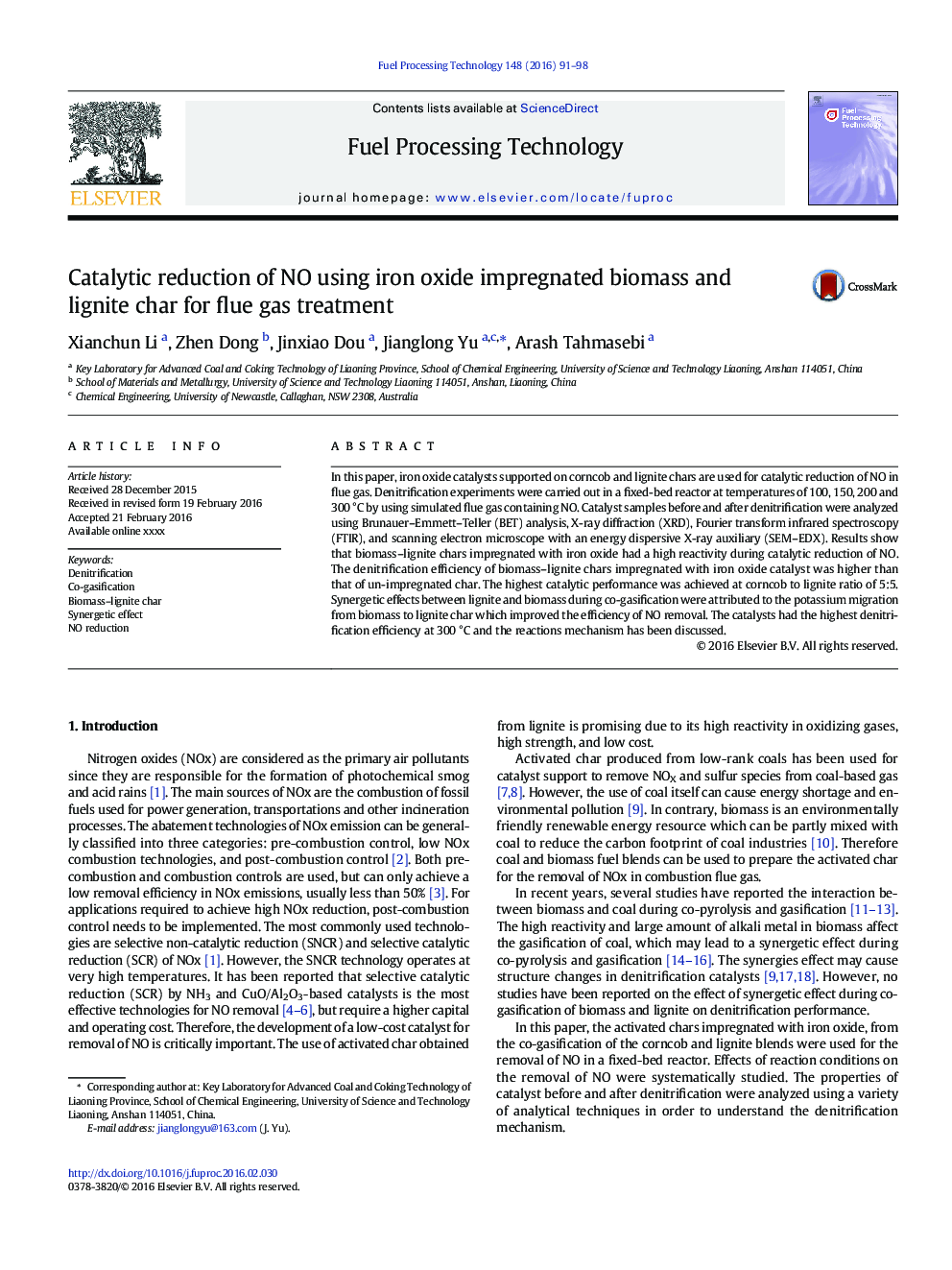| Article ID | Journal | Published Year | Pages | File Type |
|---|---|---|---|---|
| 6656626 | Fuel Processing Technology | 2016 | 8 Pages |
Abstract
In this paper, iron oxide catalysts supported on corncob and lignite chars are used for catalytic reduction of NO in flue gas. Denitrification experiments were carried out in a fixed-bed reactor at temperatures of 100, 150, 200 and 300 °C by using simulated flue gas containing NO. Catalyst samples before and after denitrification were analyzed using Brunauer-Emmett-Teller (BET) analysis, X-ray diffraction (XRD), Fourier transform infrared spectroscopy (FTIR), and scanning electron microscope with an energy dispersive X-ray auxiliary (SEM-EDX). Results show that biomass-lignite chars impregnated with iron oxide had a high reactivity during catalytic reduction of NO. The denitrification efficiency of biomass-lignite chars impregnated with iron oxide catalyst was higher than that of un-impregnated char. The highest catalytic performance was achieved at corncob to lignite ratio of 5:5. Synergetic effects between lignite and biomass during co-gasification were attributed to the potassium migration from biomass to lignite char which improved the efficiency of NO removal. The catalysts had the highest denitrification efficiency at 300 °C and the reactions mechanism has been discussed.
Related Topics
Physical Sciences and Engineering
Chemical Engineering
Chemical Engineering (General)
Authors
Xianchun Li, Zhen Dong, Jinxiao Dou, Jianglong Yu, Arash Tahmasebi,
